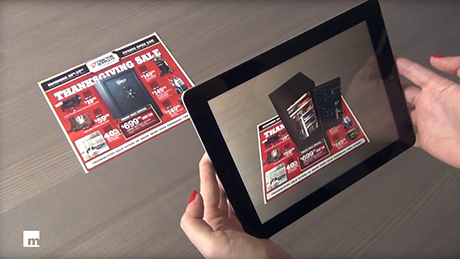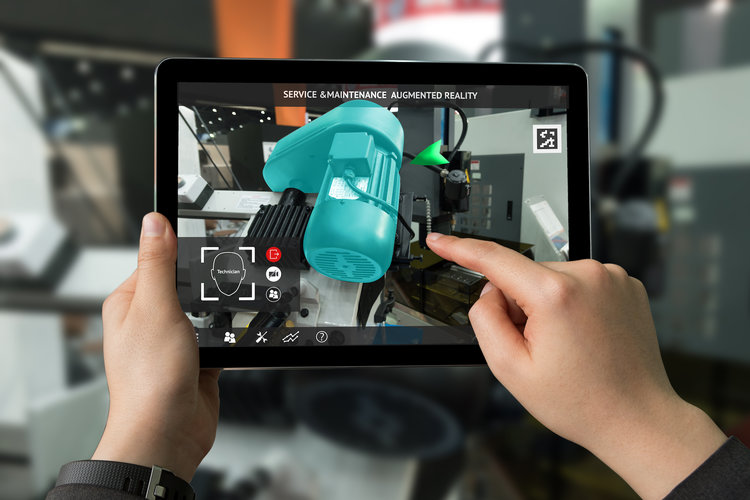Mattia Crespi, research affiliate, Institute for the Future, USA, talks about virtual and augmented realities in the postal and logistics sectors, ahead of his presentation at this year’s Parcel+Post Expo Conference.
What is your presentation about?
Virtual and augmented reality technologies can help postal and logistics providers in a variety of applications, from training on the job to maintenance of infrastructure, to customer service. This is because VR and AR are fundamental technologies of our near future; they impact at different levels in any industry. VR and AR are also referred to as immersive computing and spatial computing. They allow the creation of new digital dimensions of interaction and of new mixed-reality spaces, blending the physical and virtual worlds.
For the postal industry and for Parcel+Post Expo this year, the Institute for the Future [IFTF] will showcase some of these applications and teach the audience the main concepts behind AR and VR and how they can be applied to the postal sector. All participants will be invited to a live demo to experience first hand the power and possibilities of AR in business and operational processes, in different areas of application.
How can augmented reality help posts and logistics providers?
There are many ways AR can assist posts: one example is in the maintenance of infrastructure, buildings and vehicles. It can assist interventions anywhere by allowing the visualization of digital data and images during operations. By streaming audio and 3D elements, video and images onto the physical world, AR will display and show the user the best actions in certain conditions, how to repair parts, how to move around in environments, and how to find components to act on.
In the training of employees, AR can provide a new dimension of interaction with the learning experience and learning objects. Both AR and VR are particularly effective in this field. Learning engagement and results are dramatically increased by the use of these technologies and they can be used to create gamified learning environments.
For customers and customer relationship management, VR and AR increase the level of interaction and create new shared spaces in which a postal company can relate to the customer through gathering and showing new types of data and information in physical infrastructure such as post offices, or even by pairing with the physical parcels to give additional information on each package, such as its destination or status.
Ultimately VR and AR will enable us to create a 3D immersive and spatial digital copy of the postal physical networks and infrastructure. In this environment, we will be able to monitor in real time any activity, act on the spot where needed, and simulate new actions constantly, in a circular process of continuous learning for the employees and continuous process improvement for the postal company.

What is the IFTF?
IFTF is the world’s leading future-thinking organization. For over 50 years, businesses, governments, and social impact organizations have depended upon IFTF global forecasts, custom research, and foresight training to navigate complex change and develop world-ready strategies. IFTF methodologies and toolsets yield coherent views of transformative possibilities across all sectors that together support a more sustainable future.
How does augmented reality work?
Today AR and VR can be experienced mainly using smartphones and tablets, or essentially any device with a screen and a camera. Very soon we will be able to also use specific glasses to wear in everyday life.
Is it a good, long-term solution, given rapidly changing technology and the changing postal world?
It’s one of the building blocks of the future of the internet in 3D, the immersive and spatial internet around us, that we began creating when introducing the IoT. AR and VR are fundamental technologies of the future of the IoT, which is called the Internet of Actions, where the digital will blend with reality and all physical objects – and people – will assume a digital identity and a virtual dimension, possibly managed and regulated by a blockchain-inspired ecosystem.
What has feedback been like?
Every major company in the world is essentially looking into these emerging technologies in one way or another. We are in the period that goes in-between testing and validating some applications of the technology, to implementing it in the company processes. Currently the most mature areas of application are training, maintenance, retail and collaboration.

See Mattia Crespi give the keynote speech for the PIP Innovation & Startup Day at 9:10am on Tuesday, October 1 in room 2. For the full conference schedule, click here. To register for the conference, please click here. All information about this year’s expo can be found at the Parcel+Post Expo website.


